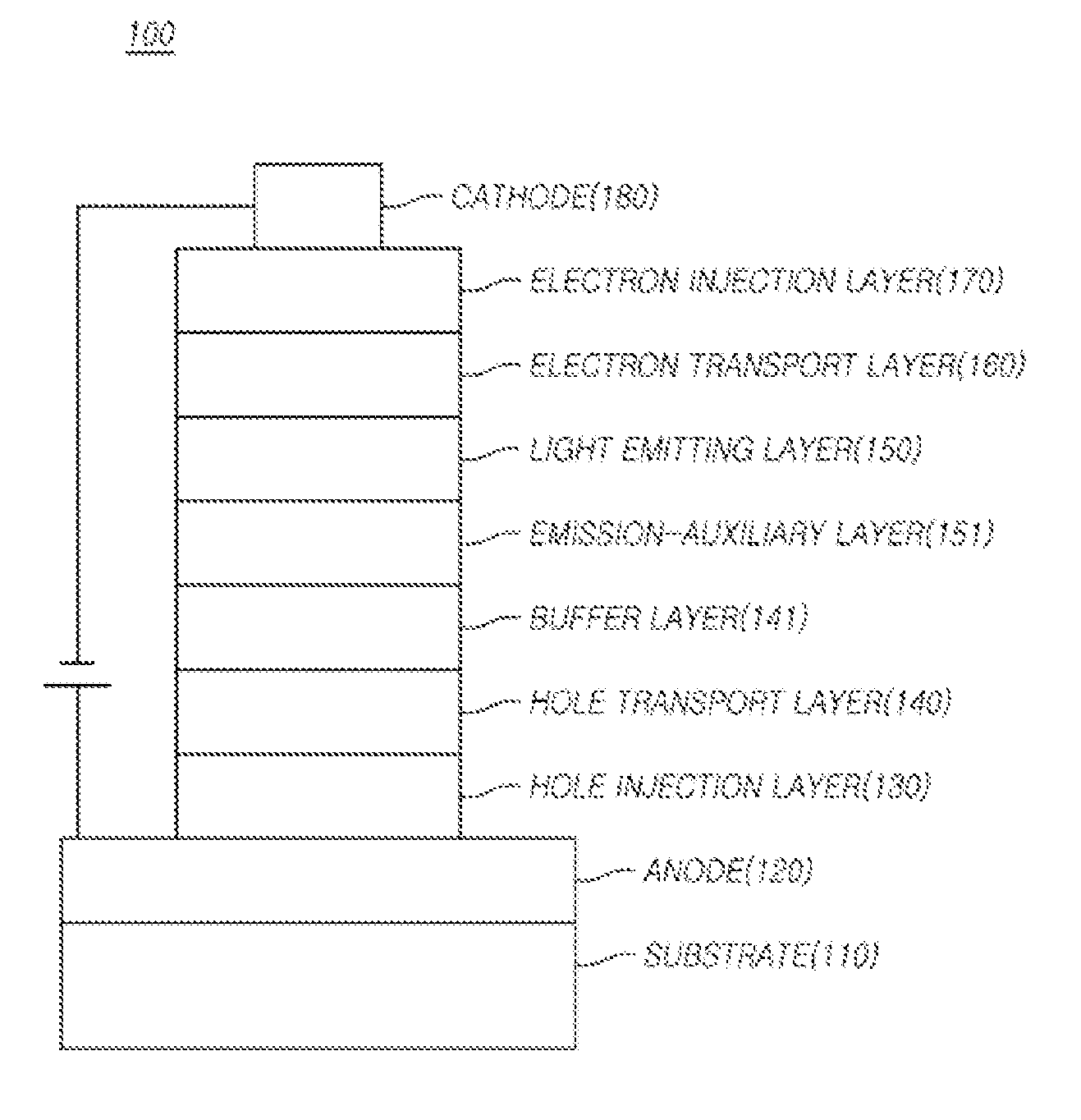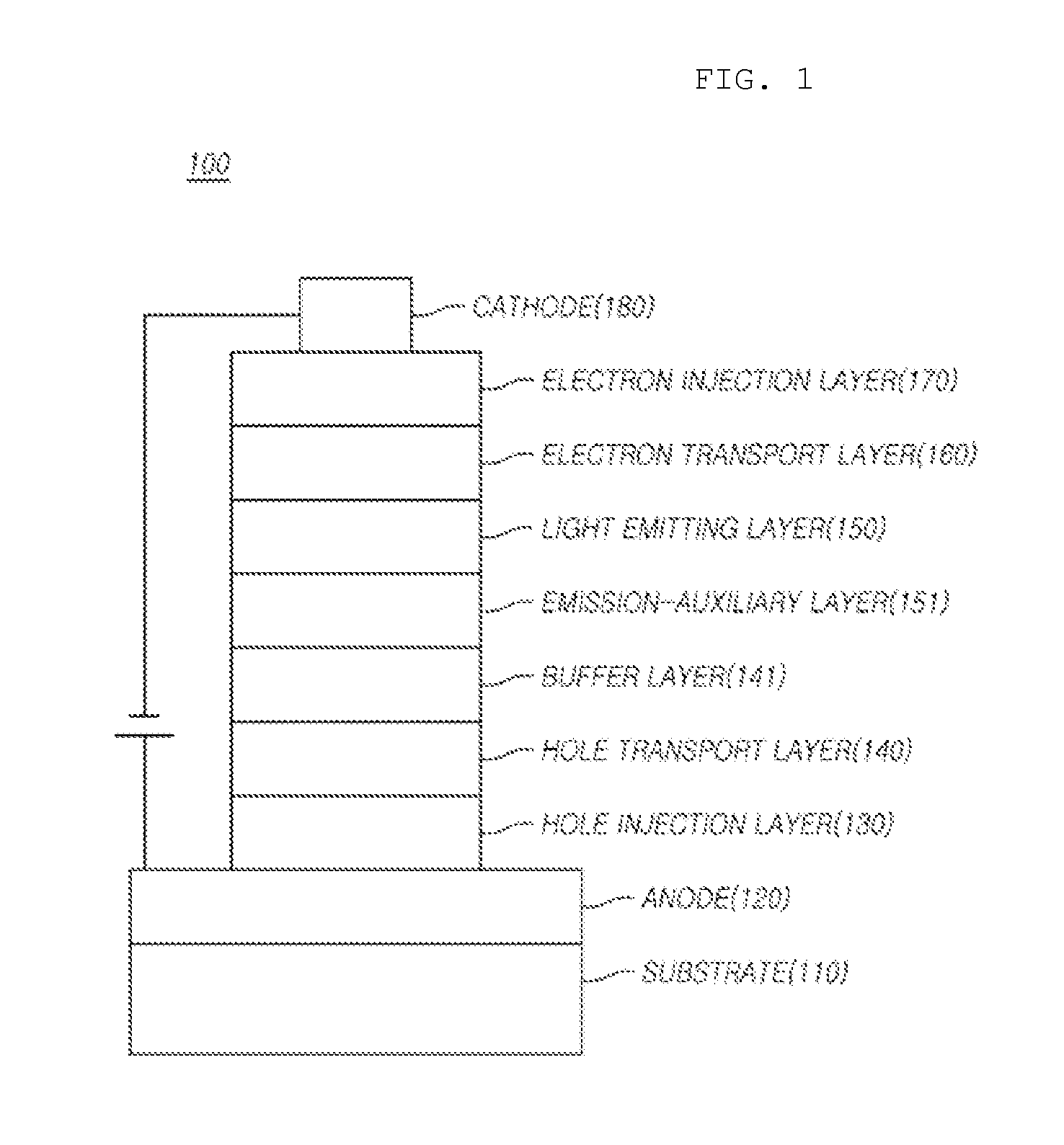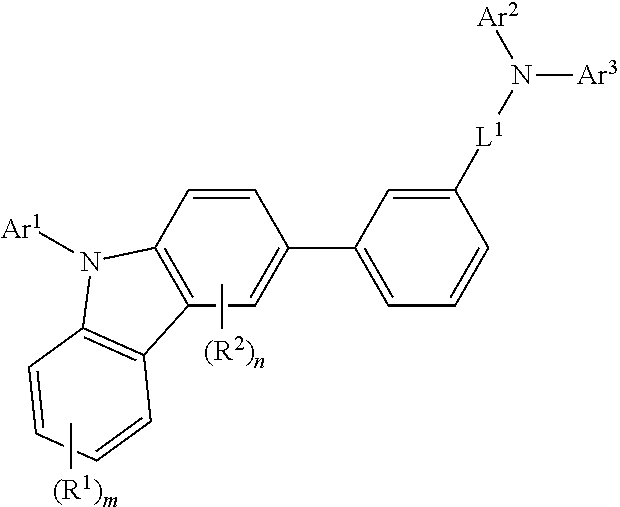Compound for organic electric element, organic electric element comprising the same and electronic device thereof
a technology of organic electric elements and organic electric elements, applied in static indicating devices, instruments, organic chemistry, etc., can solve the problems of life span or efficiency problems that cannot be maximized, life span and efficiency, and energy consumption, and achieve low driving voltage, high heat resistance, and high luminous efficiency
- Summary
- Abstract
- Description
- Claims
- Application Information
AI Technical Summary
Benefits of technology
Problems solved by technology
Method used
Image
Examples
synthesis example
[0090]The final product according to the present invention can be synthesized by reaction between Sub 1 and Sub 2 as illustrated in, but not limited to, the following Reaction Scheme 1.
[0091](Ar1 to Ar3, L1, R1, R2, m and n are as defined in Formula 1 above. When L1 is a single bond, the Br is directly bonded to a linking group of a phenyl.)
[0092]I. Synthesis Method of Sub 1
[0093]Sub 1 of Reaction Scheme 1 can be synthesized according to, but not limited to, the following Reaction Scheme 2.
[0094]Synthesis Examples of the compounds of Sub 1 will be described in detail.
[0095]1. Synthesis Method of Sub 1-A1
[0096](1) Synthesis Method of Sub 1-I-A1
[0097]phenylboronic acid (412.96 g, 3386.9 mmol) as the starting material was dissolved in THF in a round bottom flask, and 4-bromo-2-iodo-1-nitrobenzene (1665.83 g, 5080.3 mmol), Pd(PPh3)4 (195.69 g, 169.3 mmol), K2CO3 (1404.29 g, 10160.6 mmol), and water were added to the reaction solution, followed by stirring at 80° C. Upon completion of th...
PUM
| Property | Measurement | Unit |
|---|---|---|
| thickness | aaaaa | aaaaa |
| thickness | aaaaa | aaaaa |
| thickness | aaaaa | aaaaa |
Abstract
Description
Claims
Application Information
 Login to View More
Login to View More - R&D
- Intellectual Property
- Life Sciences
- Materials
- Tech Scout
- Unparalleled Data Quality
- Higher Quality Content
- 60% Fewer Hallucinations
Browse by: Latest US Patents, China's latest patents, Technical Efficacy Thesaurus, Application Domain, Technology Topic, Popular Technical Reports.
© 2025 PatSnap. All rights reserved.Legal|Privacy policy|Modern Slavery Act Transparency Statement|Sitemap|About US| Contact US: help@patsnap.com



